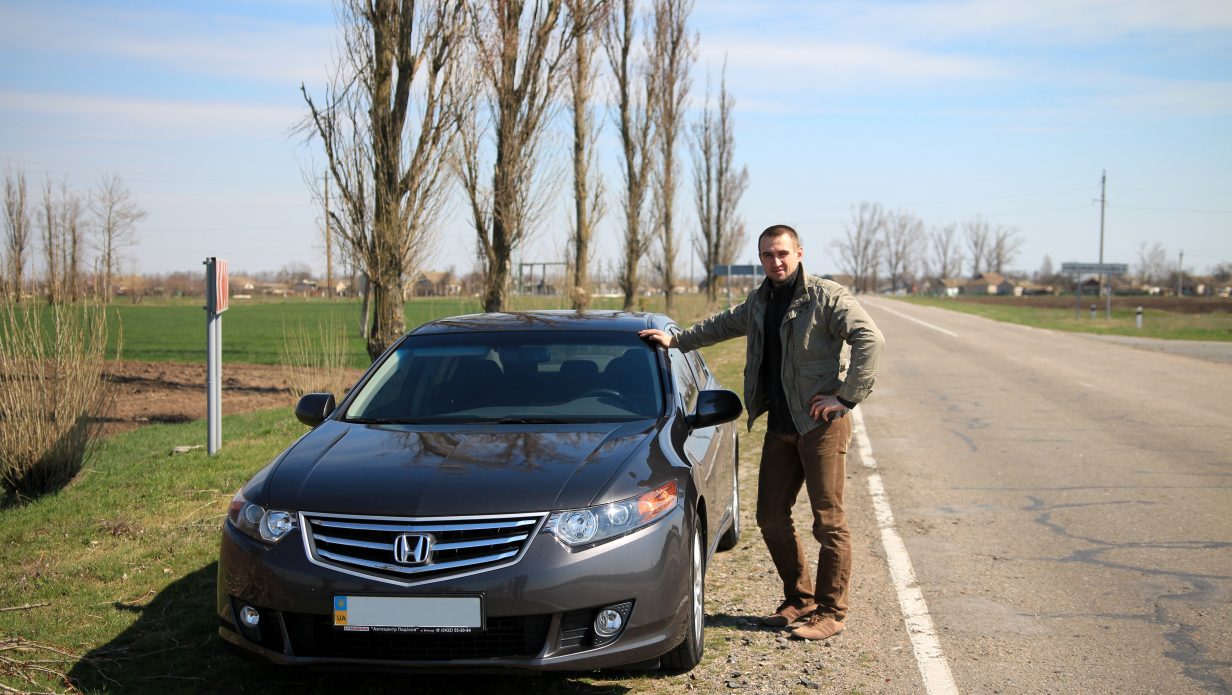
7.3 Genitive Case to Express Possession and Relationship
In this module, you will learn how to form possessive structures by means of the genitive case and how to express relationships by means of the genitive case.
Завдання 1
Note how in order to express possession, Ukrainian uses a phrase consisting of two nouns, with no prepositions: the first noun denotes the possession and the second noun denotes the possessor, who is always in the genitive case. This is equivalent to the English “of” structure – “the car of the neighbor”.
– Це твоя́ Тойо́та?
– Ні, це маши́на сусі́да.
– Це твій велосипе́д?
– Ні, ось мій, а це велосипе́д Оле́ни.
Arrange the words in each sentence below in the most natural and logical word order, ignoring the need to capitalize the word at the beginning of the sentence. Then answer the questions that follow.
Завдання 2
Compare the phrases below. Note how the preposition in the second phrase changes the meaning from possession to location.
при́нтер сестри́ — “sister’s printer”
при́нтер в сестри́ — “the printer is at sister’s place”
Now listen to the phrases below and indicate whether each denotes a possession or a location.
Завдання 3
Listen to the short dialogues and answer a comprehension question about each.
Завдання 4
Read the brief descriptions of individuals’ interests and hobbies and complete the sentences below by providing the names of the most likely owners in the correct case. The first one is done for you as an example.
- Макси́м лю́бить чита́ти.
- Ді́ти ду́же лю́блять гра́ти на інструме́нтах.
- Діду́сь ду́же лю́бить диви́тися нови́ни.
- Ю́лія лю́бить вивча́ти інозе́мні мо́ви.
- Сергі́й лю́бить гра́ти в футбо́л.
- Мо́тря ду́же лю́бить малюва́ти.
- Батьки́ лю́блять фотографува́ти.
- Адріа́на лю́бить пи́ти чай.
Завдання 5
Note how the genitive “of” structure in the sentence below denotes relationship (rather than possession). The bolded nouns are in the genitive case.
Ті́тка – це сестра́ ма́ми або́ та́та.
Match each familial relationship with one of the definitions provided.
Завдання 6
Use the family tree to fill in the missing relationships in the description below.

Завдання 7
Read the dialogue and mark the statements about it true (Пра́вда) or false (Непра́вда).
– Приві́т, Ві́ро, як кані́кули?
– До́бре, дя́кую. Я була́ вдо́ма на Різдво́, ба́чила всю роди́ну! Ось фо́то роди́ни.
– Ого! Ти ма́єш бага́то ро́дичів.
– Це пра́вда. Це мої́ батьки́, ось сестра́, а ось брат… А це жі́нка і ді́ти бра́та. А це хло́пець сестри́.
– А це хто?
– Це мій діду́сь, а це нова́ дружи́на дідуся́.
– А де твоя́ бабу́ся?
– Бабу́ся поме́рла, а діду́сь неда́вно одружи́вся зно́ву.
– А це хто?
– Це син дружи́ни дідуся́, а це його ді́вчина.
– А чий це соба́ка?
– Це соба́ка батькі́в. Його́ зва́ти Рекс.
Мовний пазл
Look through the activities you have just completed and choose the correct statements below to summarize what you have learned.
А тепер тест!
Complete the sentences below paying careful attention to context and to what you have learned about the use of genitive case to express possession and relationship.


